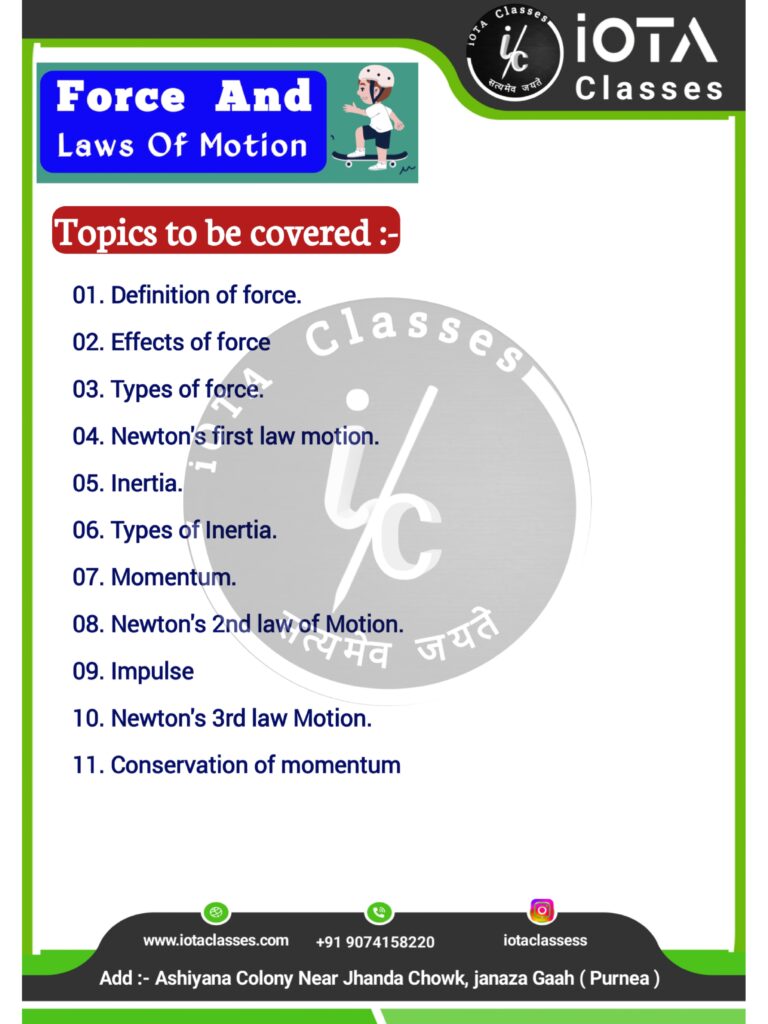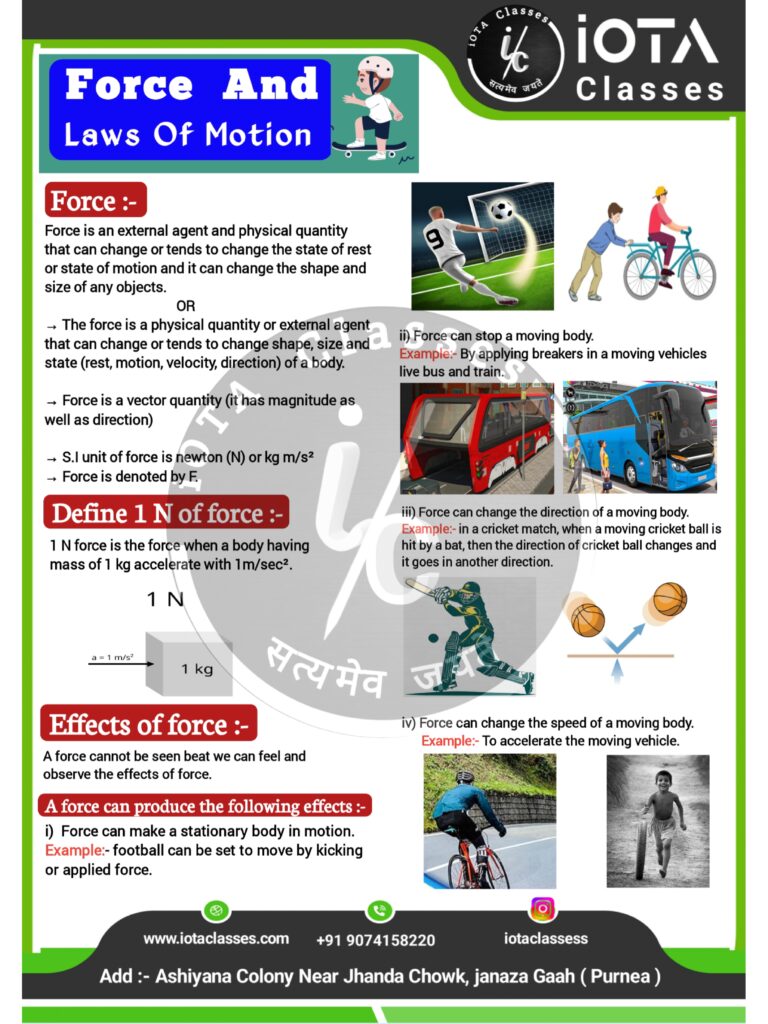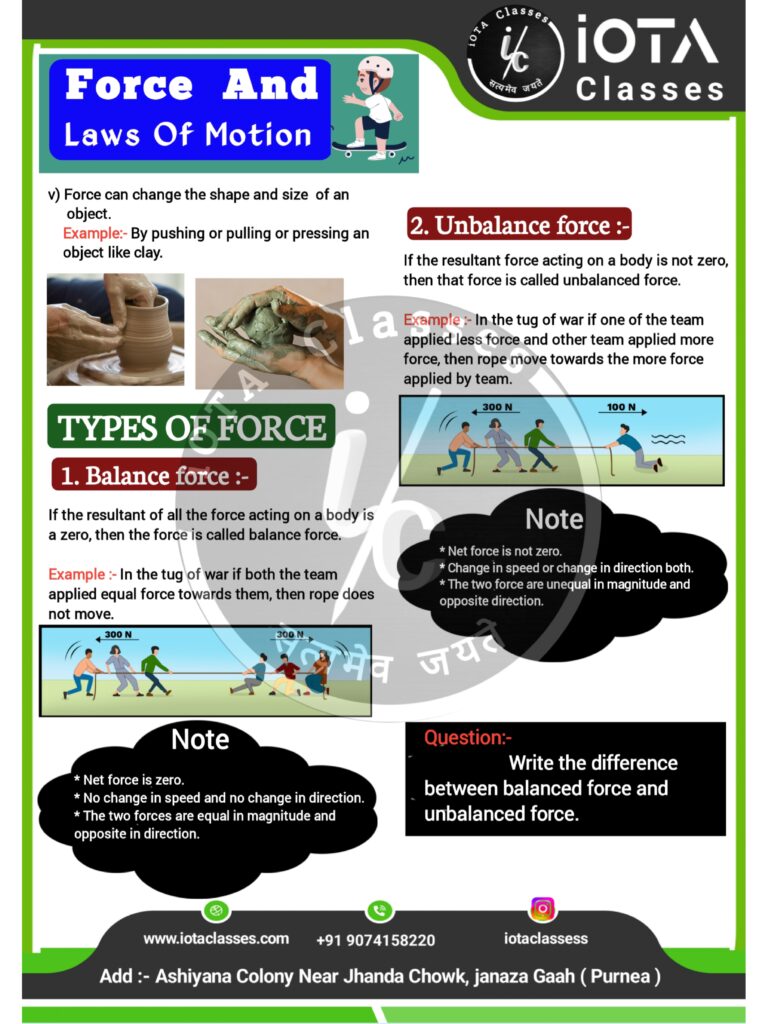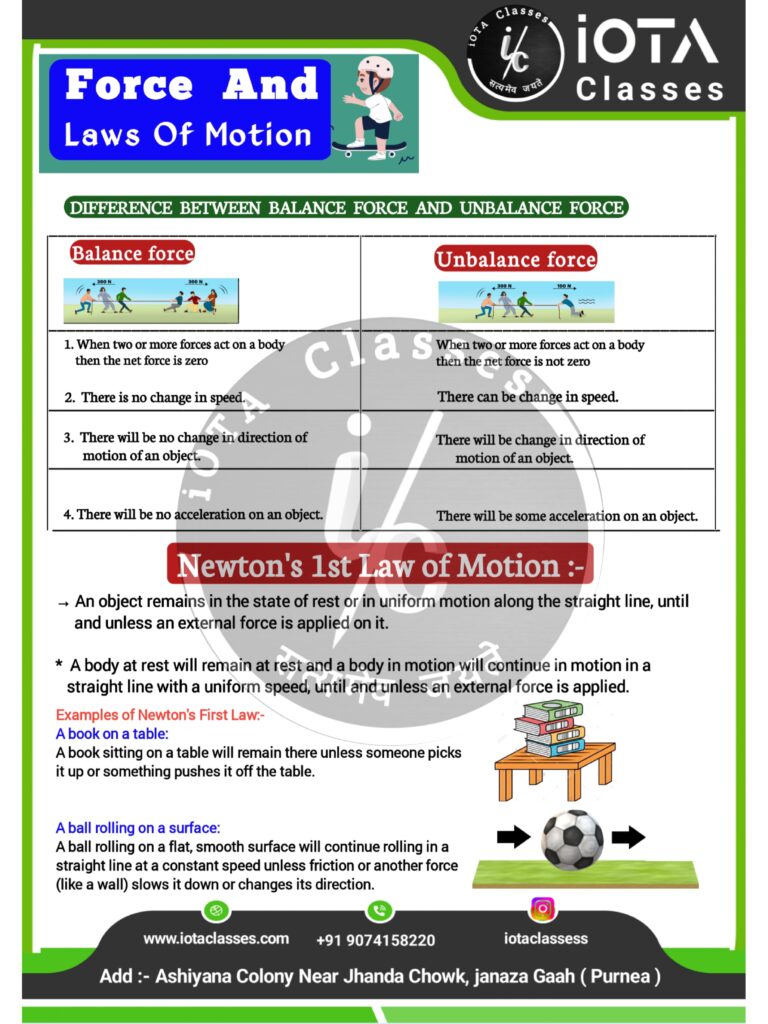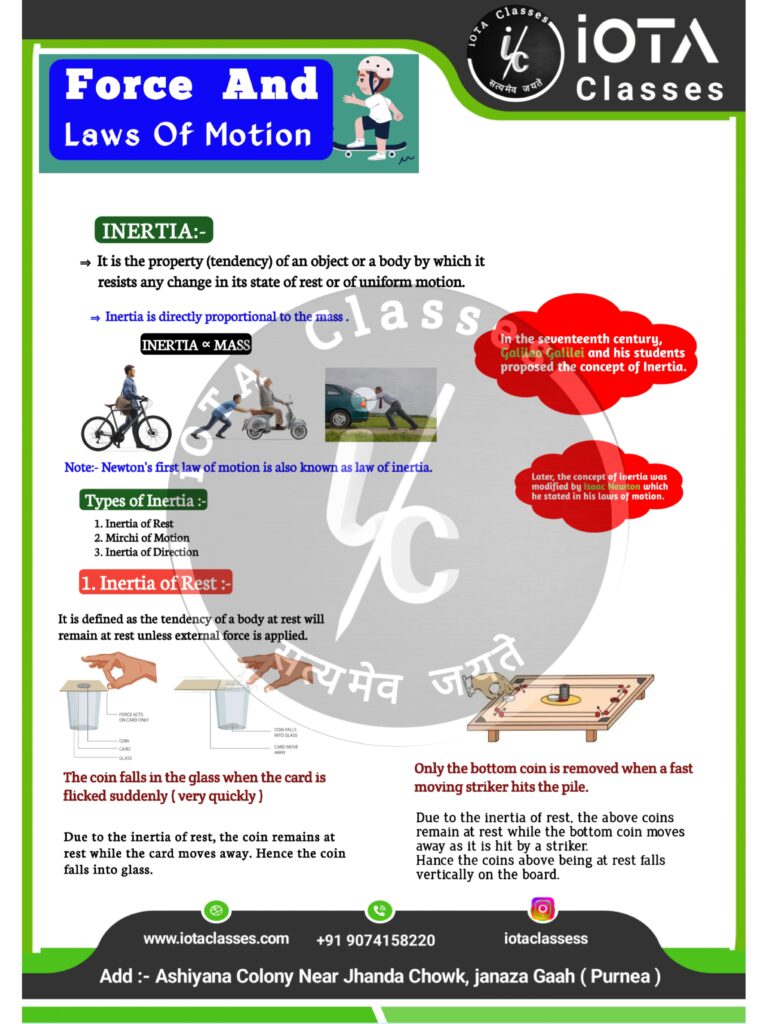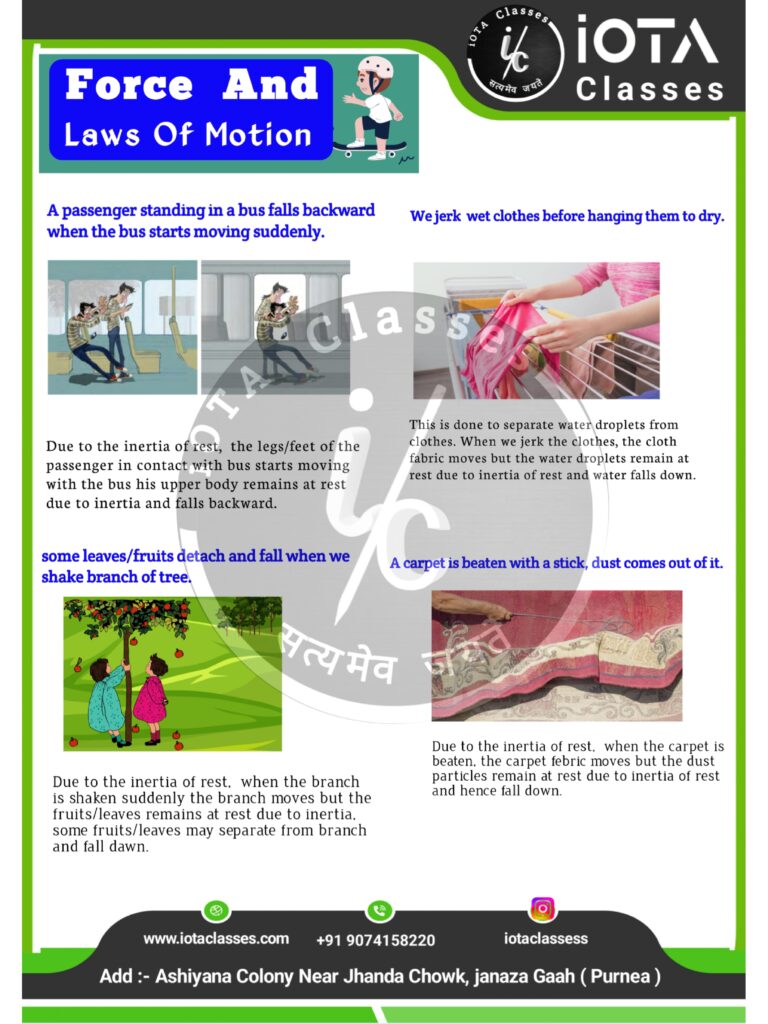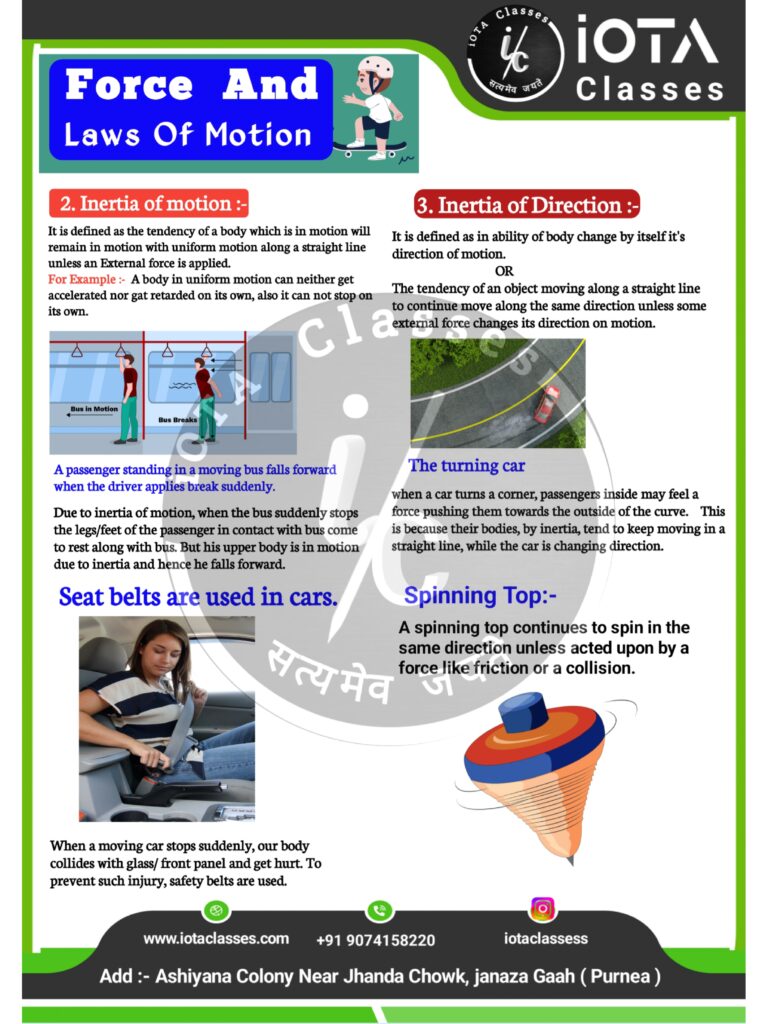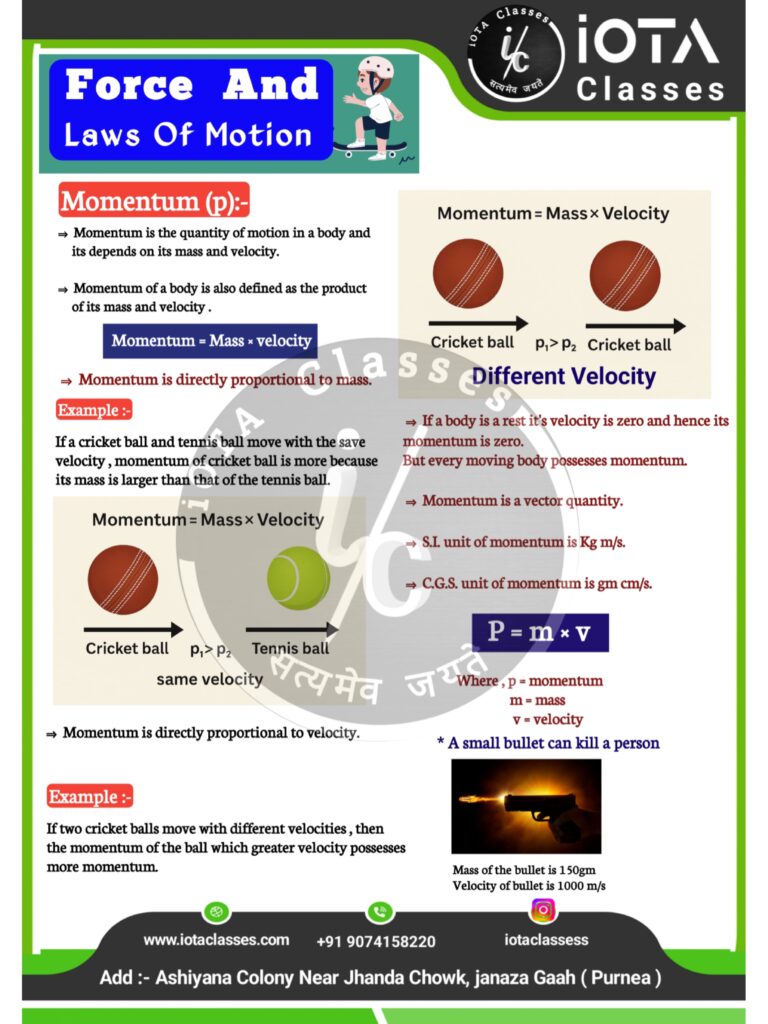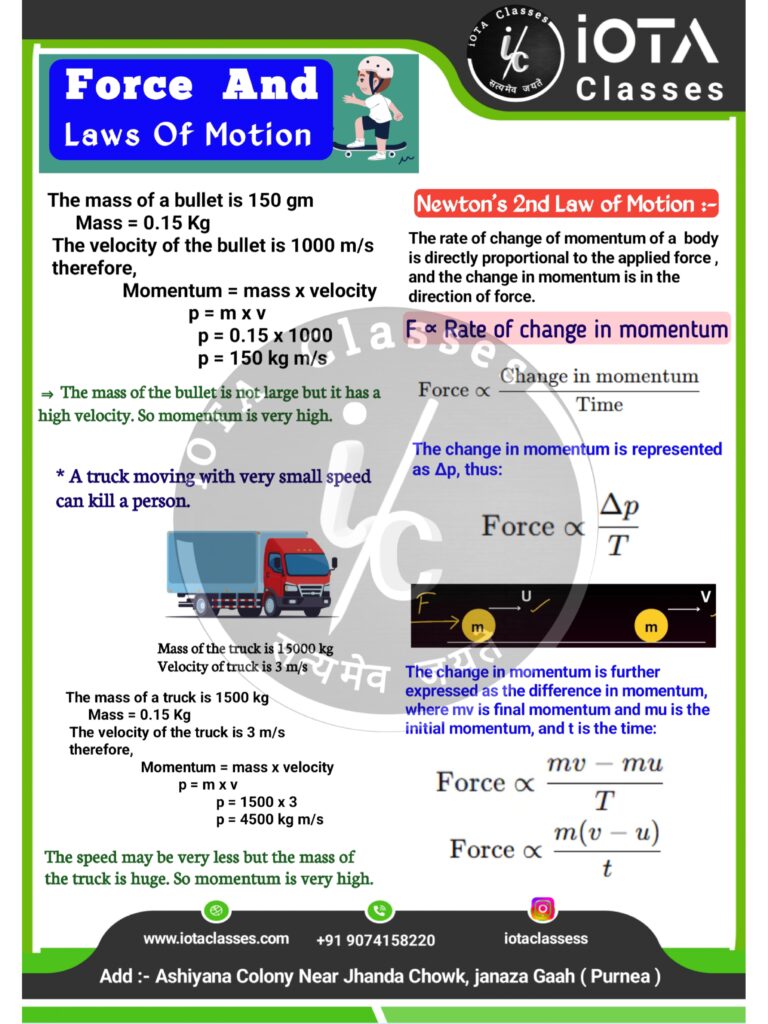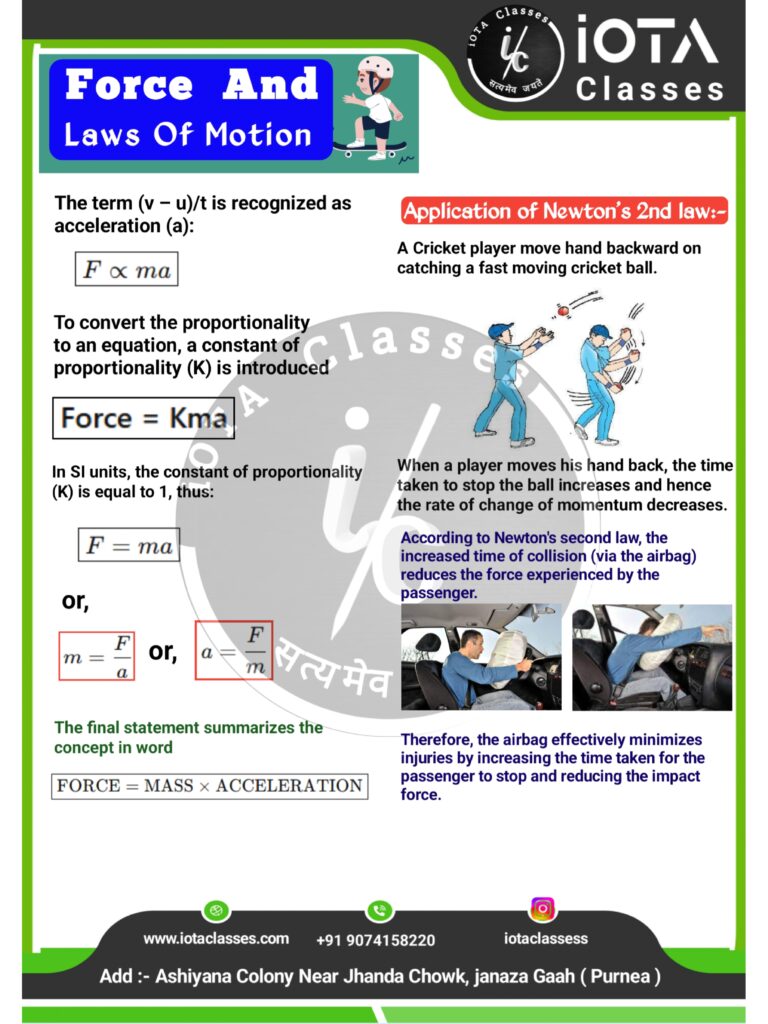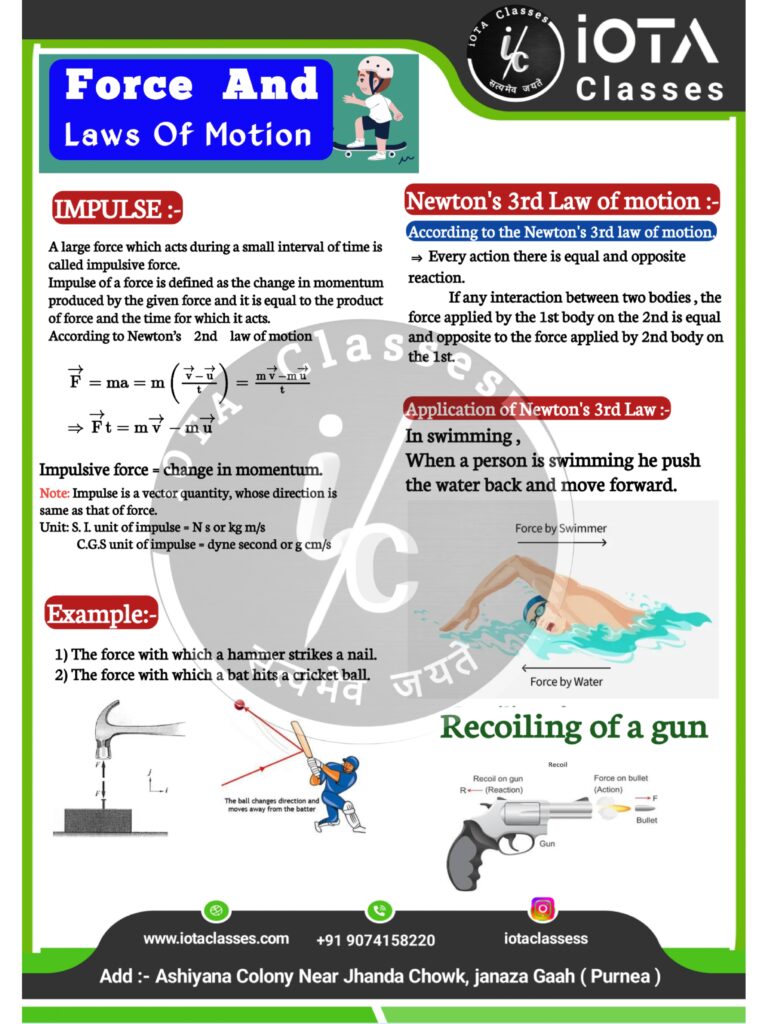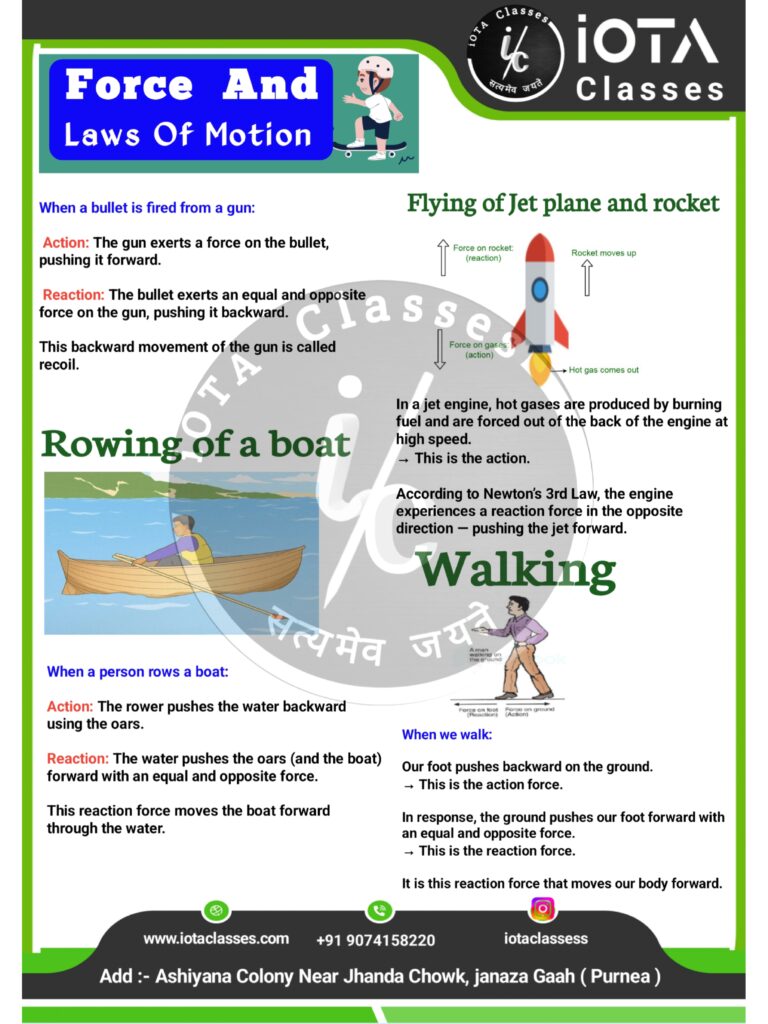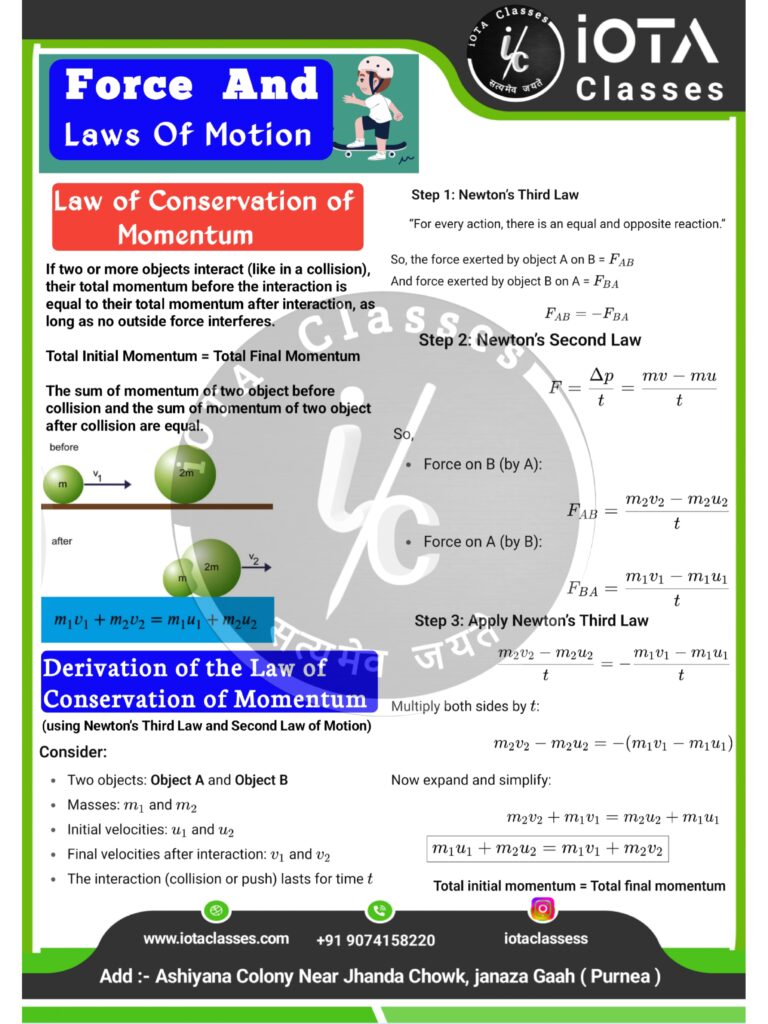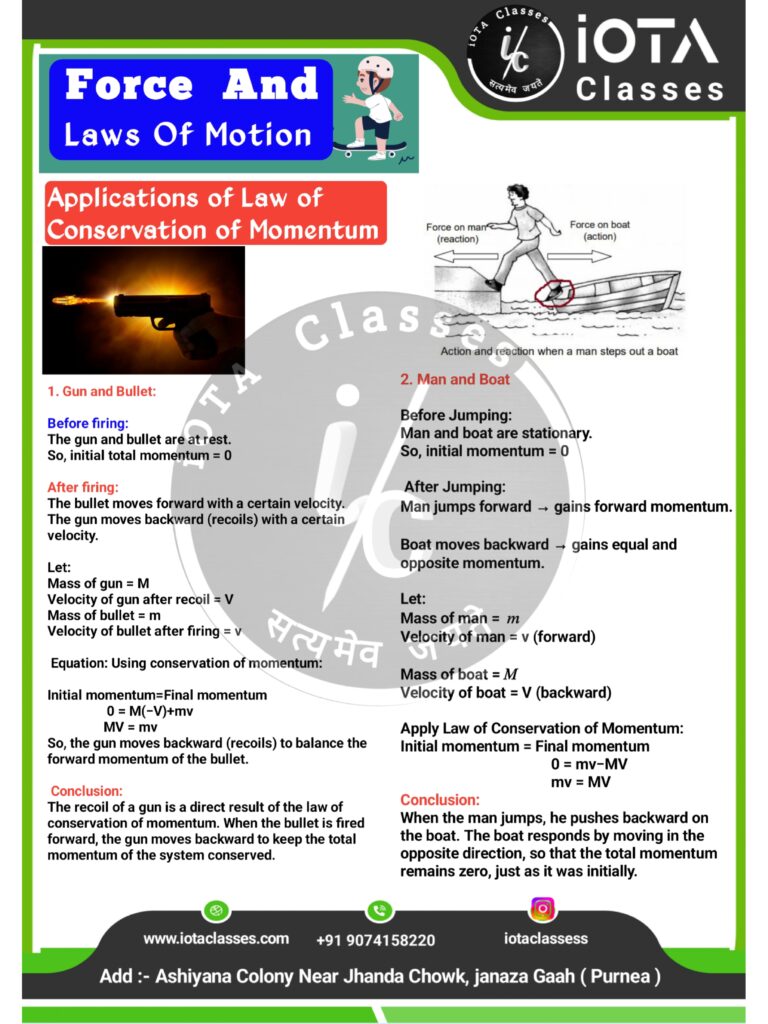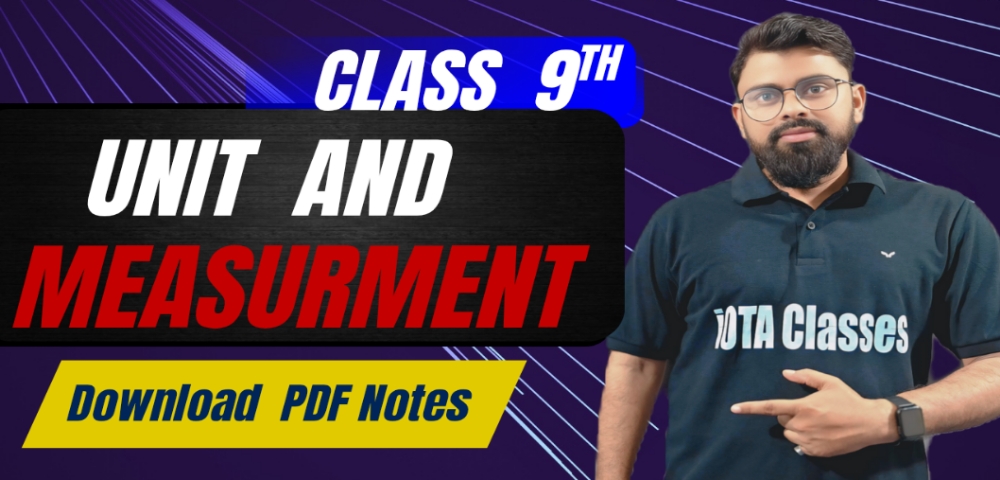Force and Laws of Motion
TOPICS TO BE COVERED
01. Definition of force.
02. Effects of force
03. Types of force.
04. Newton’s first law motion.
05. Inertia.
06. Types of Inertia.
07. Momentum.
08. Newton’s 2nd law of Motion.
09. Impulse
10. Newton’s 3rd law Motion.
11. Conservation of momentum
12. Applications of Law of Conservation of Momentum
Force :-
Force is an external agent and physical quantity
that can change or tends to change the state of rest
or state of motion and it can change the shape and
size of any objects.
OR
→ The force is a physical quantity or external agent
that can change or tends to change shape, size and
state (rest, motion, velocity, direction) of a body.
→ Force is a vector quantity (it has magnitude as
well as direction)
→ S.I unit of force is newton (N) or kg m/s²
→ Force is denoted by F.
Define 1 N of force :-
1 N force is the force when a body having mass of 1 kg accelerate with 1m/sec²
Effects of force :-
A force cannot be seen beat we can feel and observe the effects of force .
A force can produce the following effects :-
I ) force can make a stationary body in motion.
Exp :- football can be set the move by kicking or applied force.


II ) force can stop a moving body.
Exp :- By applying breakers in a moving vehicles live bus and train.
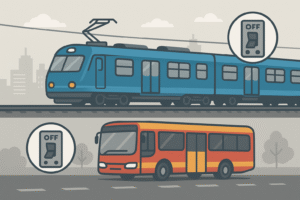

III ) force can change the direction of a moving body.
Exp :- in a cricket match , when a moving cricket ball is hit by a bat , then the direction of cricket ball change and it goes in another direction.


IV ) force can change the speed of a moving body.
Exp :- To accelerate the moving vehicle.

V ) force can change the shape and object.
Exp :- By pushing of pulling or pressing and object like clay.


TYPES OF FORCE
1. Balance force
If the resultant of all the force acting on a body is
a zero, then the force is called balance force.
Example :- In the tug of war if both the team
applied equal force towards them, then rope does
not move.

Note
* Net force is zero.
* No change in speed and no change in direction.
* The two forces are equal in magnitude and opposite in direction.
2. Unbalance force :-
If the resultant force acting on a body is not zero. then that force is called unbalanced force.
Example :- In the tug of war if one of the team applied less force and other team applied more force, then rope move towards the more force applied by team.
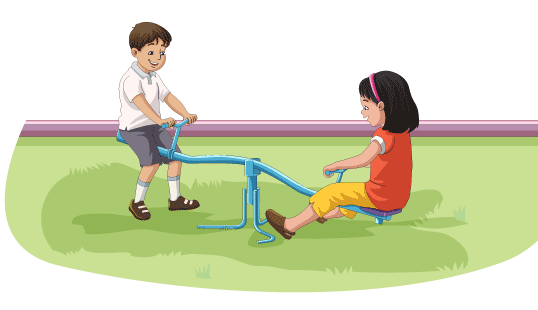
Note
* Net force is not zero.
* Change in speed or change in direction both.
* The two force are unequal in magnitude and opposite direction.
DIFFERENCE BETWEEN BALANCE FORCE AND UNBALANCE FORCE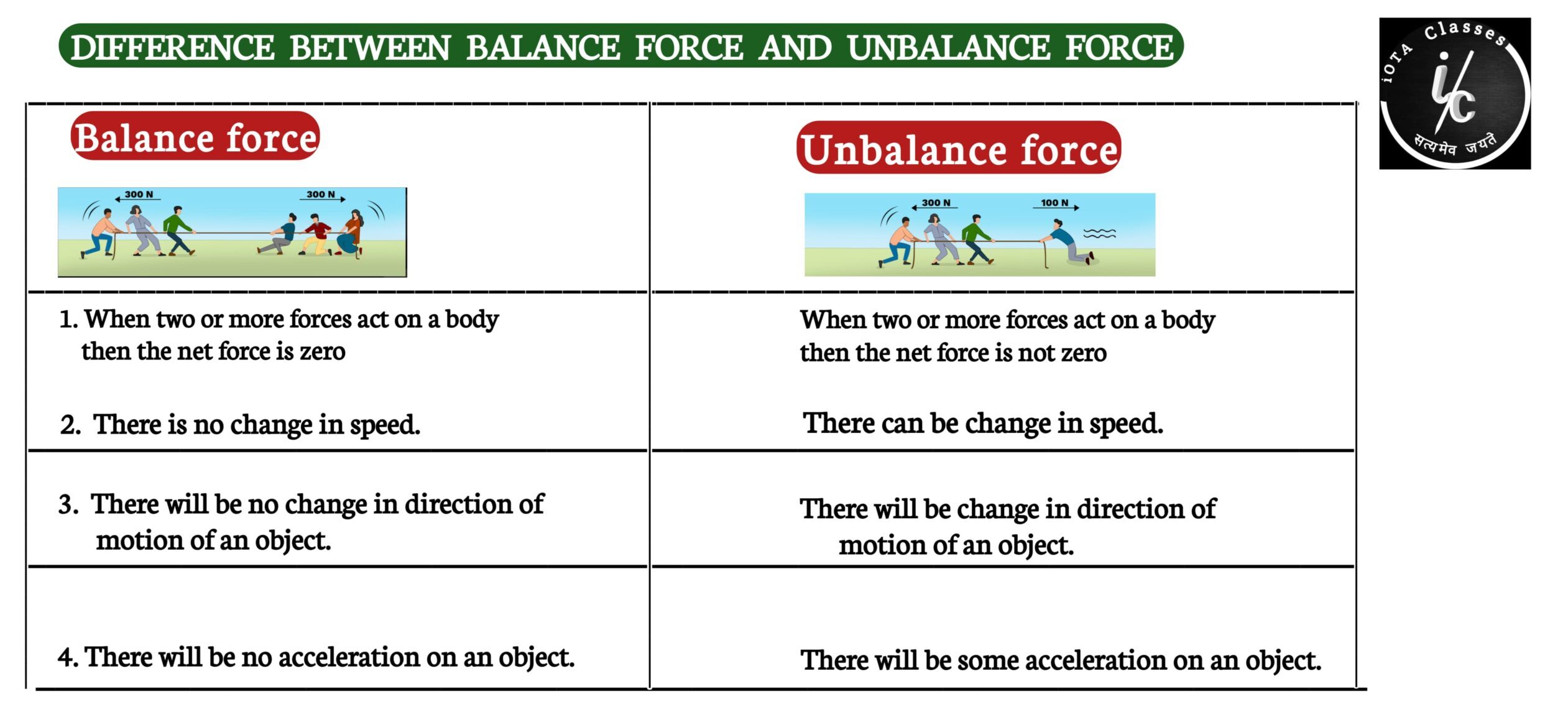
Newton’s 1st Law of Motion :-
→ An object remains in the state of rest or in uniform motion along the straight line, until and unless an external force is applied on it.
* A body at rest will remain at rest and a body in motion will continue in motion in a straight line with a uniform speed, until and unless an external force is applied.
Examples of Newton’s First Law:-
A book on a table:
A book sitting on a table will remain there unless someone picks it up or something pushes it off the table.
A ball rolling on a surface:
A ball rolling on a flat, smooth surface will continue rolling in a straight line at a constant speed unless friction or another force (like a wall) slows it down or changes its direction.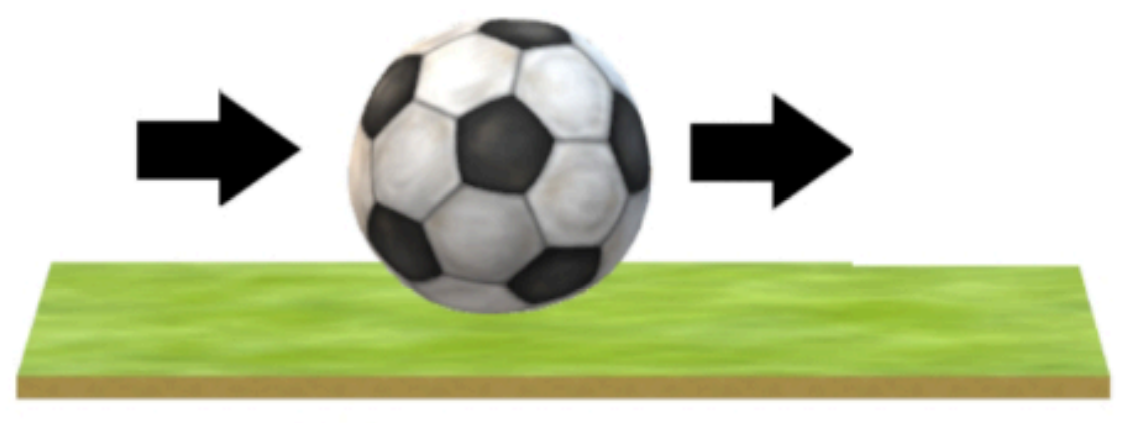
INERTIA :-
→ It is the property (tendency) of an object or a body by which it resists any change in its state of rest or of uniform motion.
→ Inertia is directly proportional to the mass.
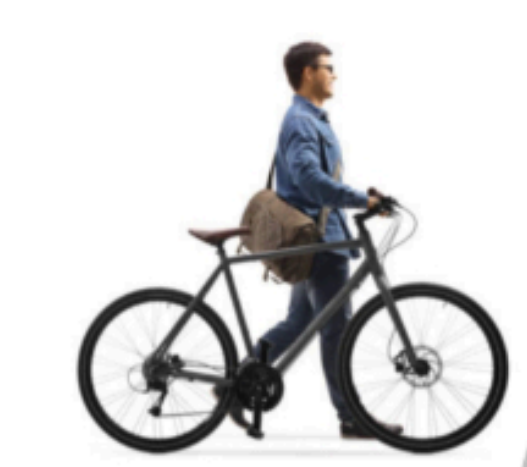
Types of Inertia
1. Inertia of rest
2. Mirchi of motion
3. Inertia of direction
1. Inertia of Rest :-
It is defined as the tendency of body to remains in its position of rest.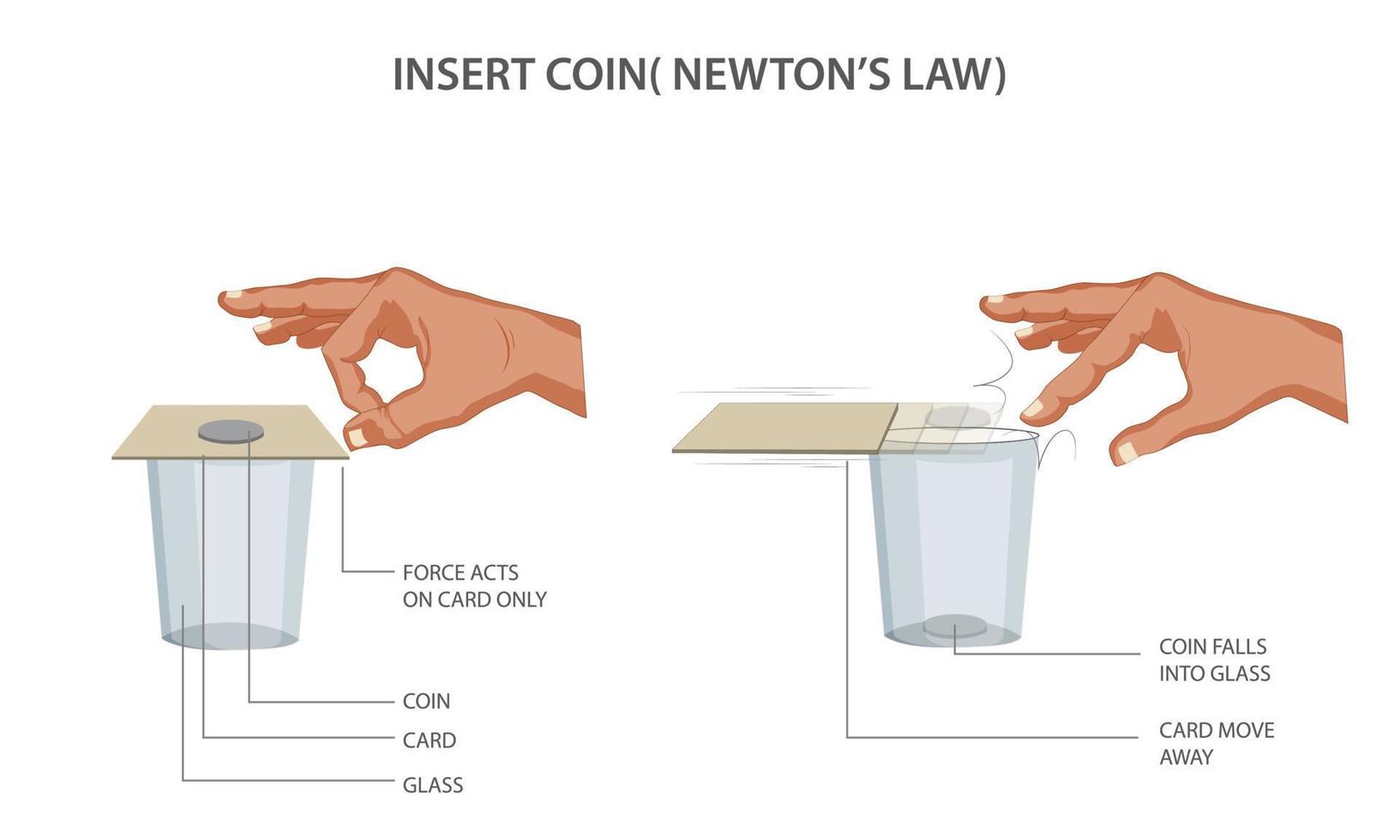
The coin falls in the glass when the card is flicked suddenly (very quickly)
Due to the inertia of rest, the coin remains at rest while the card moves away. Hence the coin falls into glass.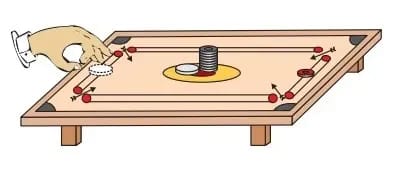
Only the bottom coin is removed when a fast
moving striker hits the pile.
Due to the inertia of rest. the above coins remain at rest while the bottom coin moves away as it is hit by a striker. Hance the coins above being at rest falls vertically on the board.
A passenger standing in a bus falls backward when the bus starts moving suddenly.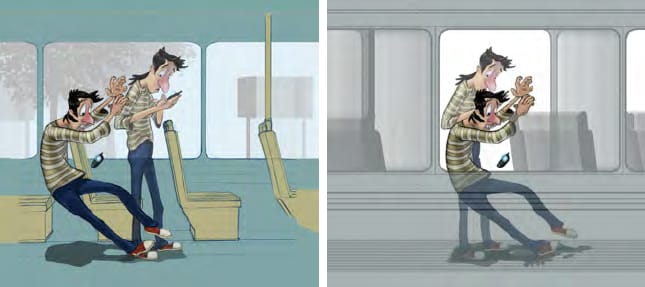
Due to the inertia of rest, the legs/feet of the passenger in contact with bus starts moving with the bus his upper body remains at rest due to inertia and falls backward.
some leaves/fruits detach and fall when we shake branch of tree.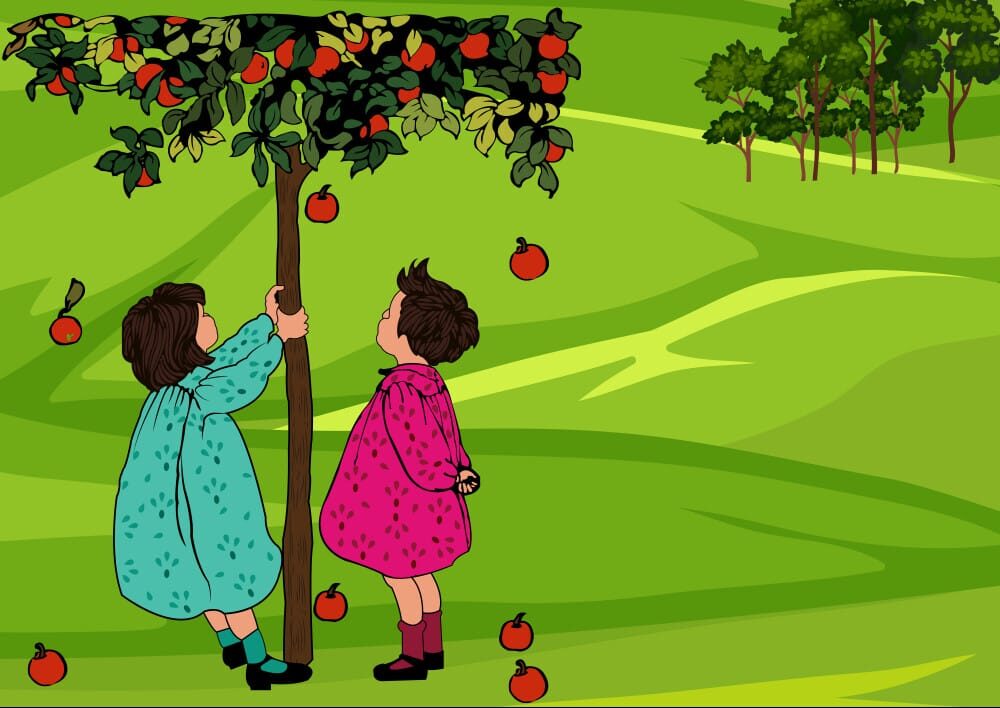
Due to the inertia of rest. when the branch is shaken suddenly the branch moves but the fruits/leaves remains at rest due to inertia. some fruits/leaves may separate from branch and fall dawn.
We jerk wet clothes before hanging them to dry.
This is done to separate water droplets from clothes. When we jerk the clothes, the cloth fabric moves but the water droplets remain at rest due to inertia of rest and water falls down.
A carpet is beaten with a stick, dust comes out of it.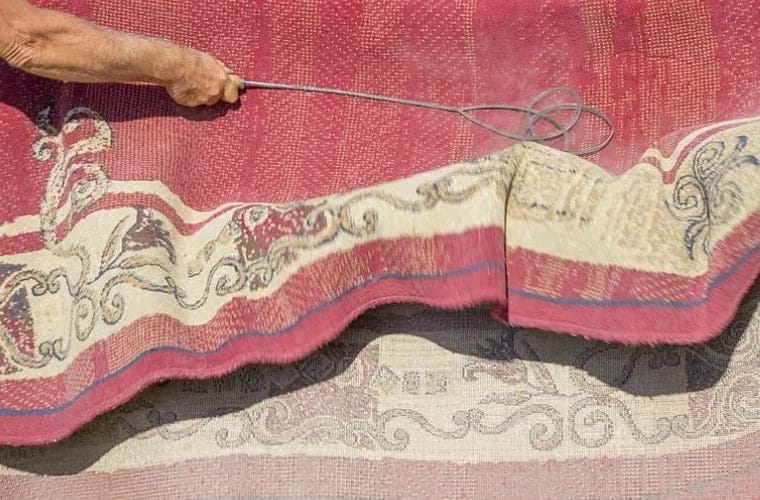
Due to the inertia of rest, when the carpet is beaten, the carpet fabric moves but the dust particles remain at rest due to inertia of rest and hence fall down.
2. Inertia of motion :-
It is defined as the tendency of a body which is in motion will remain in motion with uniform motion along a straight line unless an External force is applied.
For Example :- A body in uniform motion can neither get accelerated nor gat retarded on its own, also it can not stop on its own.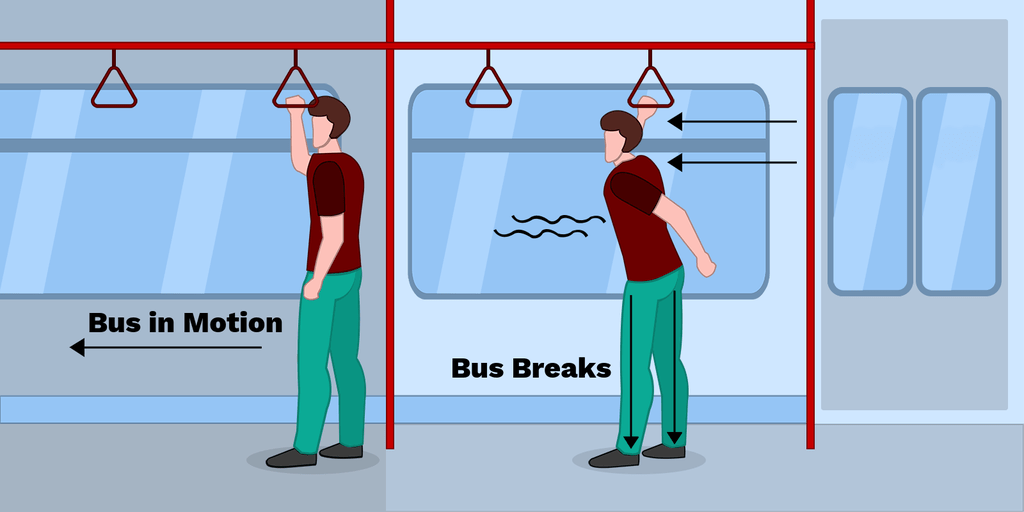
A passenger standing in a moving bus falls forward when the driver applies break suddenly.
Due to inertia of motion, when the bus suddenly stops the legs/feet of the passenger in contact with bus come to rest along with bus. But his upper body is in motion due to inertia and hence he falls forward.
Seat belts are used in cars. 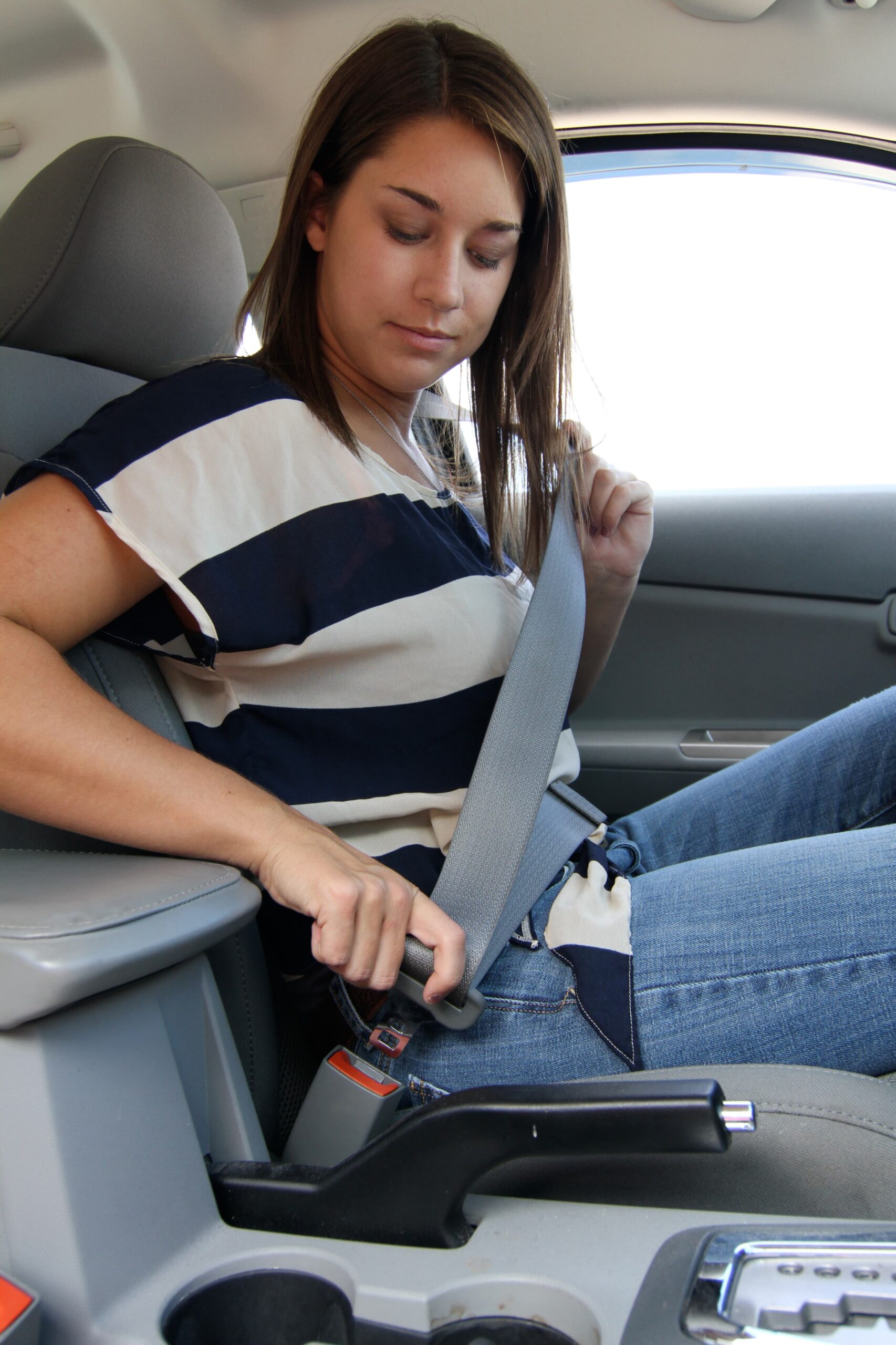
When a moving car stops suddenly, our body collides with glass/ front panel and get hurt. To prevent such injury, safety belts are used.
3. Inertia of Direction
It is defined as in ability of body change by itself it’s direction of motion.
OR
The tendency of an object moving along a straight line to continue move along the same direction unless some external force changes its direction on motion.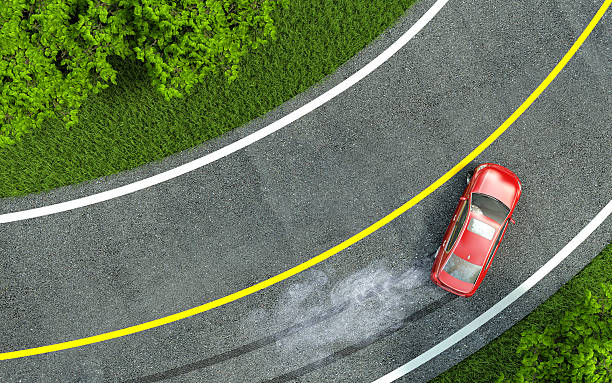
The turning car
when a car turns a corner, passengers inside may feel a force pushing them towards the outside of the curve. This is because their bodies, by inertia, tend to keep moving in a straight line, while the car is changing direction.
Spinning Top:-
A spinning top continues to spin in the same direction unless acted upon by a force like friction or a collision.
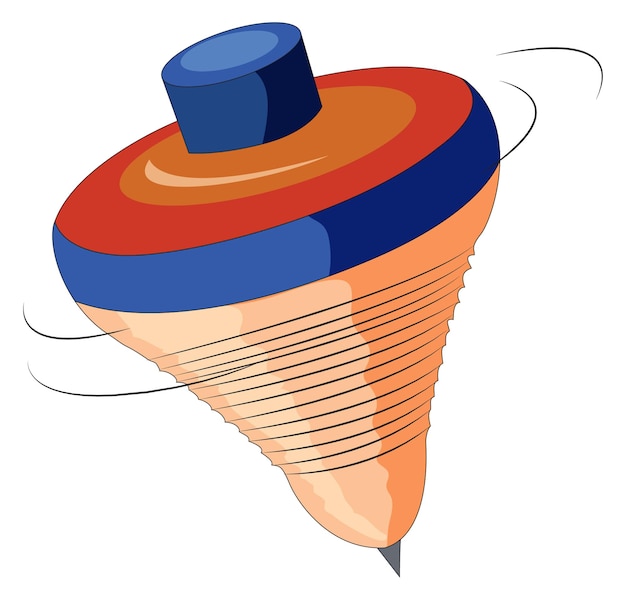
Momentum :-
→ Momentum is the quantity of motion in a body and its depends on its mass and velocity.
→ Momentum of a body is also defined as the product of its mass and velocity.

→ Momentum is directly proportional to mass.
Example :-
Is a cricket ball and tennis ball move with the save velocity , momentum of cricket ball is more because its mass is larger than that of the tennis ball.
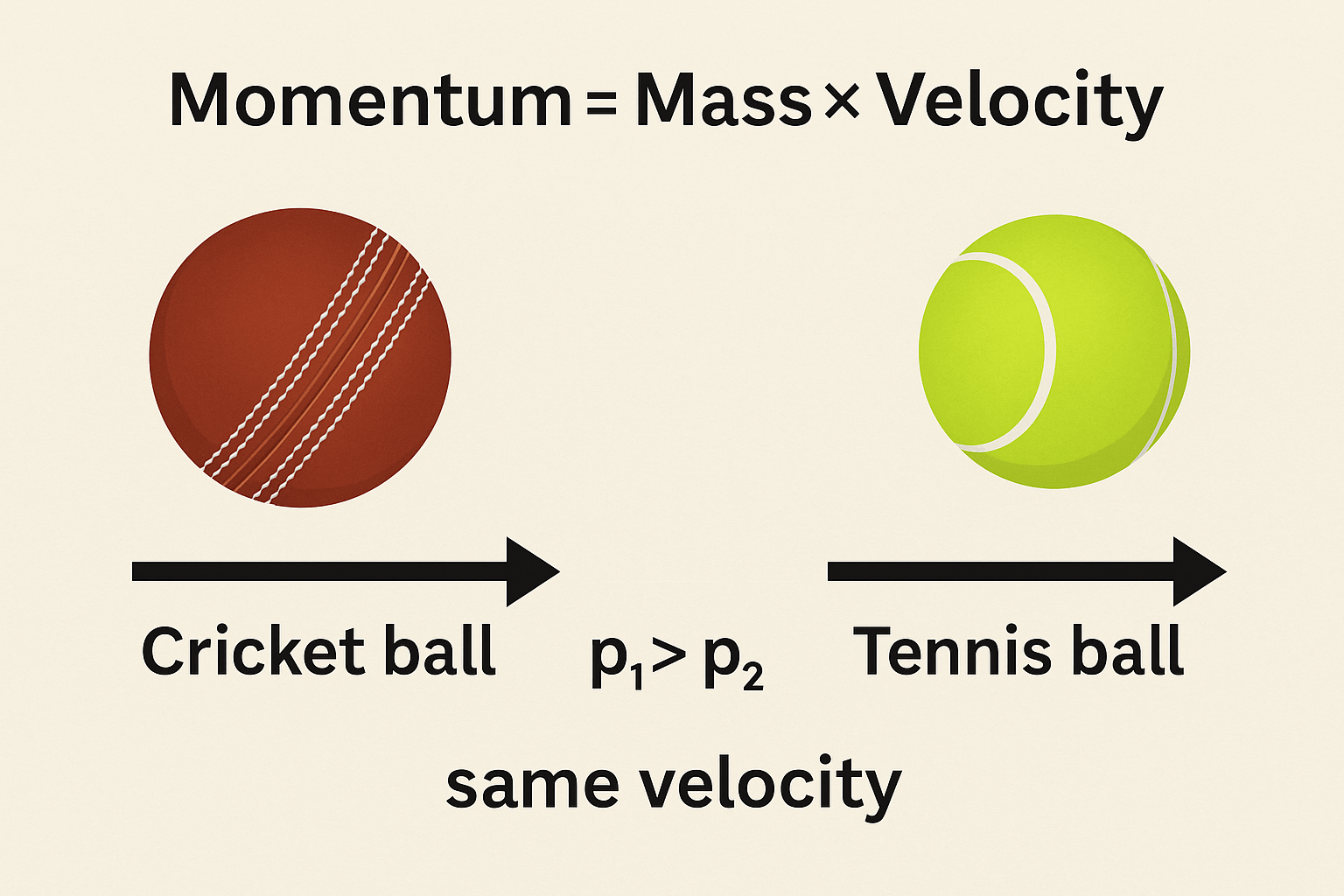
→ Momentum is directly proportional to velocity.
Example :-
If two cricket balls move with different velocities , then the momentum of the ball which greater velocity possesses more momentum.
If a body is a rest it’s velocity is zero and hence its momentum is zero.
But every moving body possesses momentum.
Momentum is a vector quantity.
S.I. unit of momentum is Kg m/s.
C.G.S unit of momentum is gm cm/s.
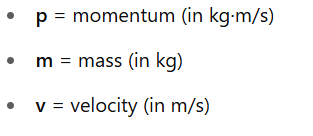
* A small bullet can kill a person
Mass of the bullet is 150gm
Velocity of bullet is 1000 m/s
The mass of a bullet is 150 gm
Mass = 0.15 Kg
The velocity of the bullet is 1000 m/s
therefore,
Momentum = mass x velocity
p = mxv
p = 0.15 x 1000
p = 150 kg m/s
→ The mass of the bullet is not large but it has a high velocity. So momentum is very high.
→ A truck moving with very small speed can kill a person.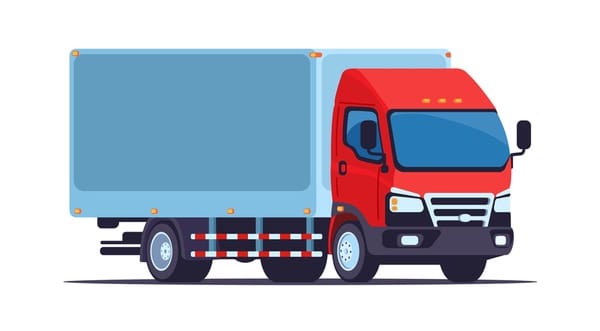
Mass of the truck is 15000 kg
Velocity of truck is 3 m/s
The mass of a truck is 1500 kg
Mass = 0.15 Kg
The velocity of the truck is 3 m/s
therefore,
Momentum = mass x velocity
p= mx V
p = 1500 x 3
p = 4500 kg m/s
The speed may be very less but the mass of the truck is huge. So momentum is very high.
Newton’s 2nd Law of Motion :-
The rate of change of momentum of a body is directly proportional to the applied force, and the change in momentum is in the direction of force.

The change in momentum is represented as Δp, thus:


The change in momentum is further expressed as the difference in momentum, where mv is final momentum and mu is the initial momentum, and t is the time:
Factoring out the mass (m) gives:

The term v – u is recognized as acceleration (a):![]()
To convert the proportionality to an equation, a constant of proportionality (K) is introduced![]()
In SI units, the constant of proportionality (K) is equal to 1, thus:
This final equation is Newton’s second law of motion.
The image also includes two rearrangements of this equation, showing that:


9. The final statement summarizes the concept in word

Application of Newton’s 2nd law :-
A Cricket player move hand backward on catching a fast moving cricket ball.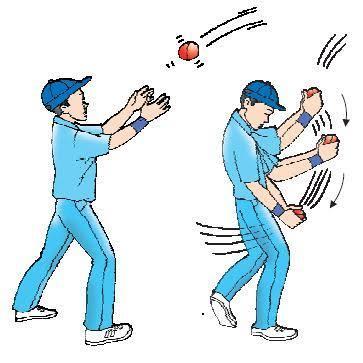
When a player moves his hand back, the time taken to stop the ball increases and hence the rate of change of momentum decreases.
According to Newton’s second law, the increased time of collision (via the airbag) reduces the force experienced by the passenger.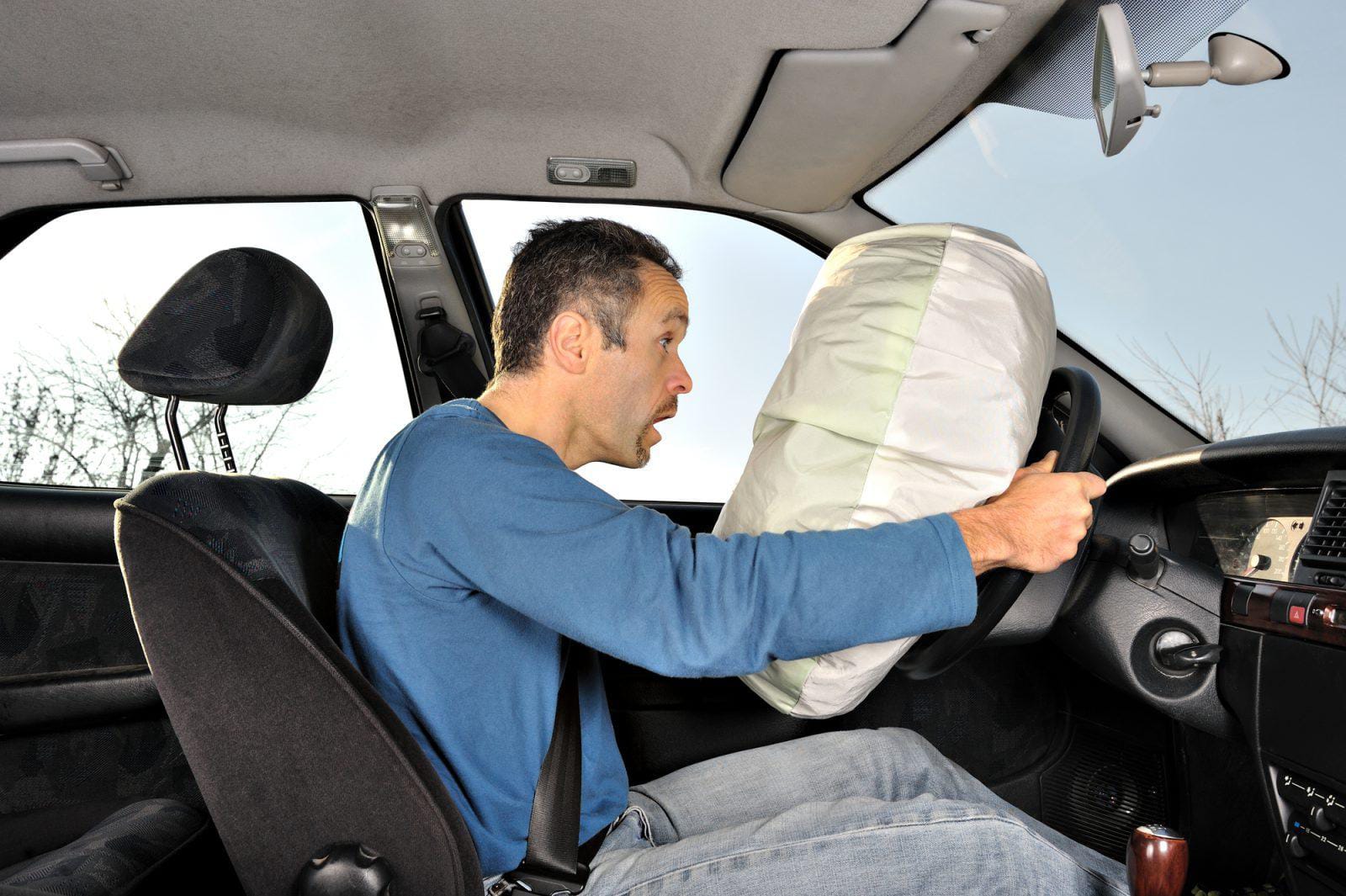
Therefore, the airbag effectively minimizes injuries by increasing the time taken for the passenger to stop and reducing the impact force.
IMPULSE :-
A large force which acts during a small interval of time is called impulsive force.
Impulse of a force is defined as the change in momentum produced by the given force and it is equal to the product of force and the time for which it acts.
According to Newton’s 2nd law of motion

Note: Impulse is a vector quantity, whose direction is
same as that of force.
Unit: S. I. unit of impulse = N s or kg m/s
C.G.S unit of impulse = dyne second or g cm/s
Example:-
1) The force with which a hammer strikes a nail.
2) The force with which a bat hits a cricket ball.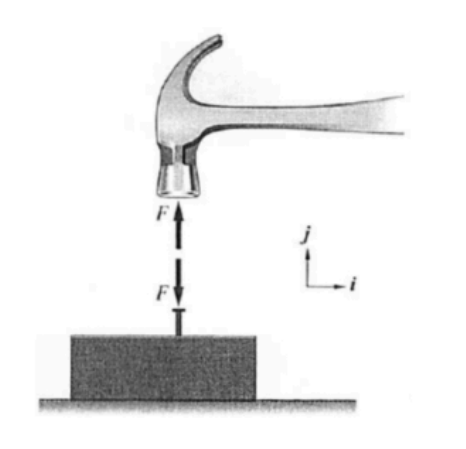

Newton’s 3rd Law of motion :-
According to the Newton’s 3rd law of motion :-
→ Every action there is equal and opposite reaction.
→ If any interaction between two bodies , the force applied by the 1st body on the 2nd is equal and opposite to the force applied by 2nd body on the 1st.
Application of Newton’s 3rd Law :-
In swimming ,
When a person is swimming he push the water back and move forward.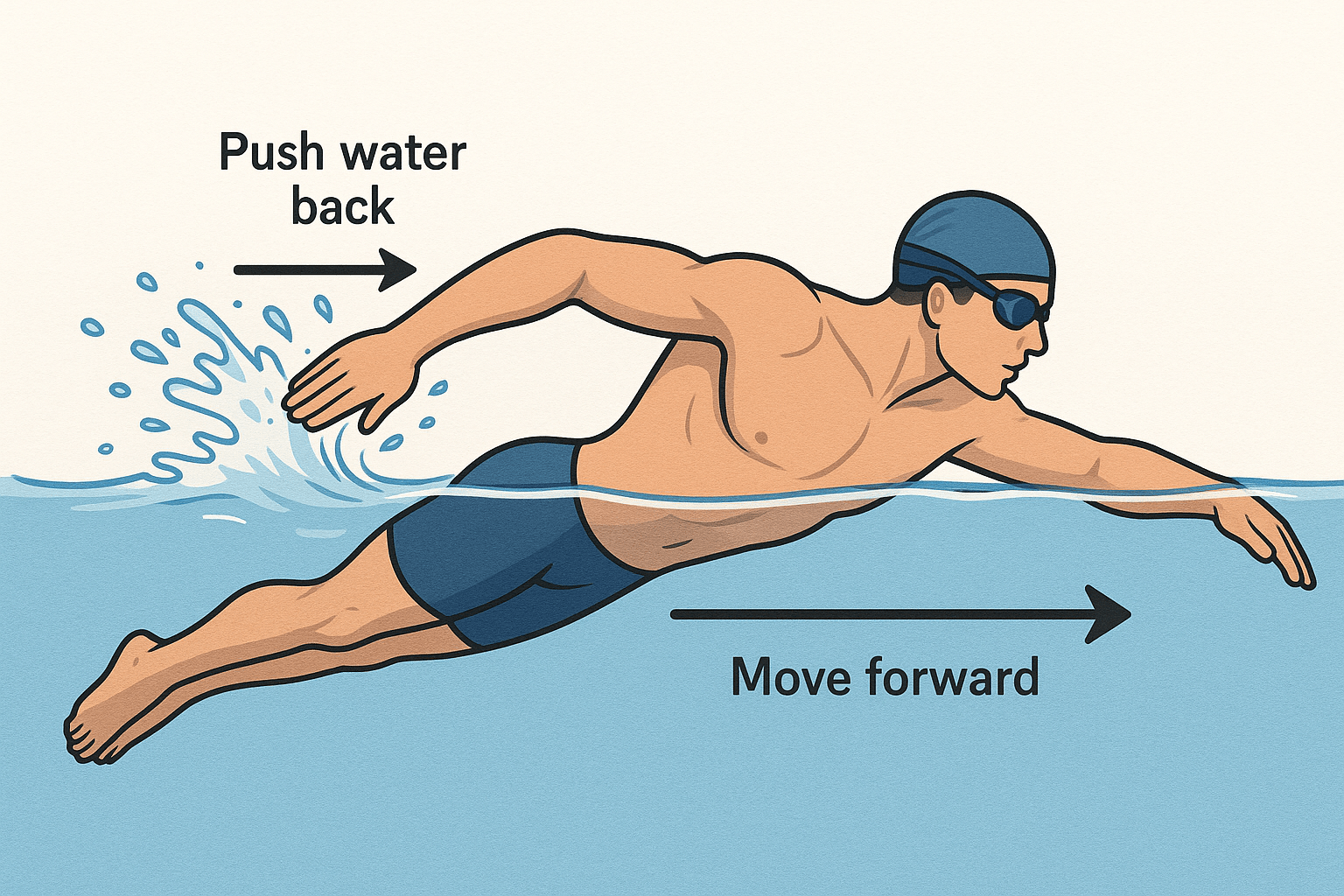
Recoiling of a gun
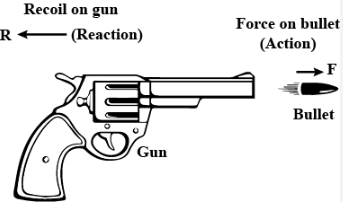
When a bullet is fired from a gun:
Action: The gun exerts a force on the bullet, pushing it forward.
Reaction: The bullet exerts an equal and opposite force on the gun, pushing it backward.
This backward movement of the gun is called recoil.
Rowing of a boat
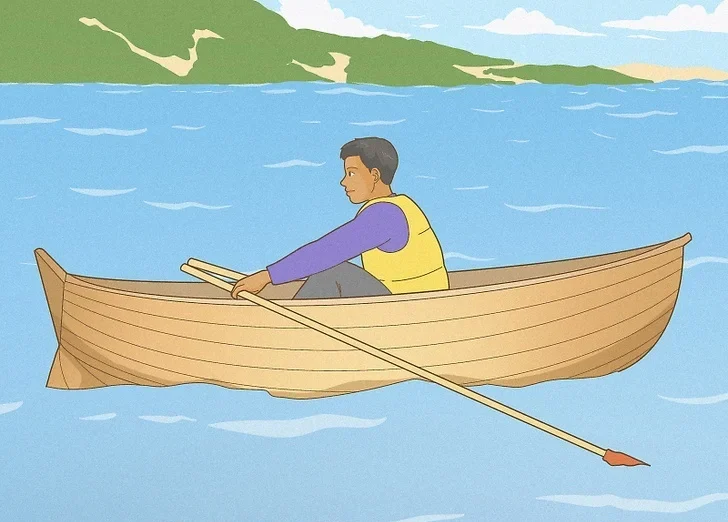
When a person rows a boat:
Action: The rower pushes the water backward using the oars.
Reaction: The water pushes the oars (and the boat) forward with an equal and opposite force.
This reaction force moves the boat forward through the water.
Flying of Jet plane and rocket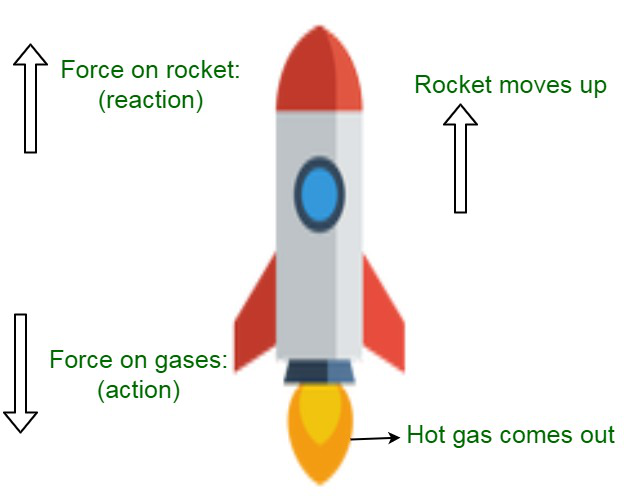
In a jet engine, hot gases are produced by burning fuel and are forced out of the back of the engine at high speed.
→ This is the action.
According to Newton’s 3rd Law, the engine experiences a reaction force in the opposite direction – pushing the jet forward.
Walking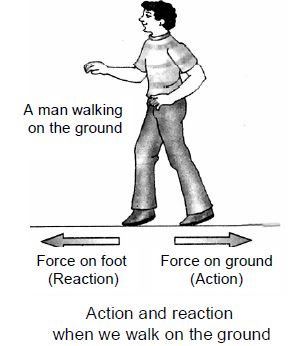
When we walk:
Our foot pushes backward on the ground.
→ This is the action force.
In response, the ground pushes our foot forward with an equal and opposite force.
→ This is the reaction force.
It is this reaction force that moves our body forward.
Law of Conservation of Momentum :-
If two or more objects interact (like in a collision), their total momentum before the interaction is equal to their total momentum after interaction, as long as no outside force interferes.
Total Initial Momentum = Total Final Momentum
The sum of momentum of two object before collision and the sum of momentum of two object after collision are equal.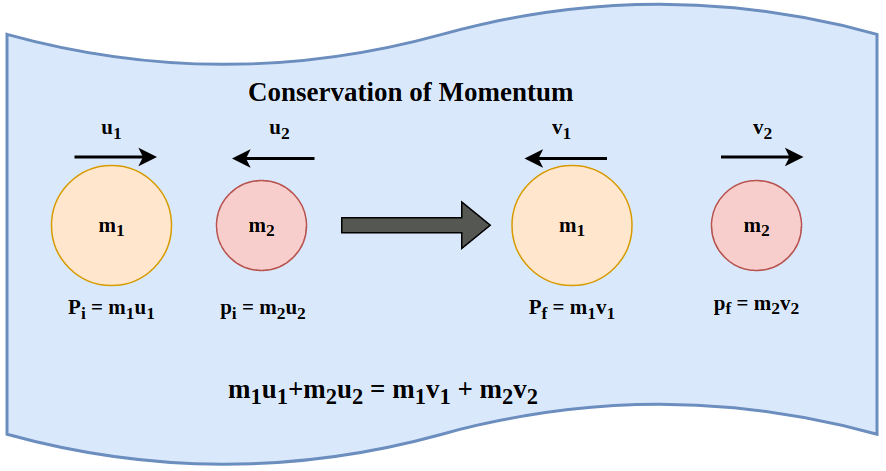
Derivation of the Law of Conservation of Momentum
(using Newton’s Third Law and Second Law of Motion) Consider:
• Two objects: Object A and Object B
• Masses: m1 and m2
• Initial velocities: u1 and u2
• Final velocities after interaction: U1 and v2
• The interaction (collision or push) lasts for time t
Step 1: Newton’s Third Law
“For every action, there is an equal and opposite reaction.”
So, the force exerted by object A on B = FAB
And force exerted by object B on A= FBA
Step 2: Newton’s Second Law
so

Step 3: Apply Newton’s Third Law

Multiply both sides by t:
Now expand and simplify:


Applications of Law of Conservation of Momentum

1. Gun and Bullet:
Before firing:
The gun and bullet are at rest.
So, initial total momentum = 0
After firing:
The bullet moves forward with a certain velocity.
The gun moves backward (recoils) with a certain velocity.
Let:
Mass of gun = M
Velocity of gun after recoil = V
Mass of bullet = m
Velocity of bullet after firing = v
Equation: Using conservation of momentum:
Initial momentum=Final momentum
0 = M(-V)+mv
MV = mv
So, the gun moves backward (recoils) to balance the forward momentum of the bullet.
Conclusion:
The recoil of a gun is a direct result of the law of conservation of momentum. When the bullet is fired forward, the gun moves backward to keep the total momentum of the system conserved.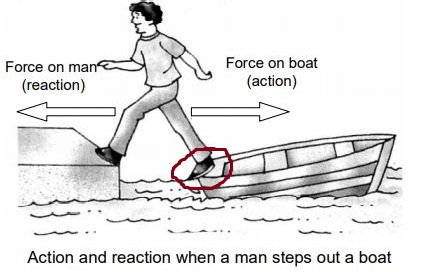
2. Man and Boat
Before Jumping:
Man and boat are stationary.
So, initial momentum = 0
After Jumping:
Man jumps forward → gains forward momentum.
Boat moves backward gains equal and opposite momentum.
Let:
Mass of man = m
Velocity of man = v (forward)
Mass of boat = М
Velocity of boat = V (backward)
Apply Law of Conservation of Momentum:
Initial momentum = Final momentum
0 = mv-MV
mv = MV
Conclusion:
When the man jumps, he pushes backward on the boat. The boat responds by moving in the opposite direction, so that the total momentum remains zero, just as it was initially.
Home – View
Official Website- Physics Wallah
iOTA CLASSES has been working for the last 6 years at youtube ( online mode) but from last year ( 2024) we are running both online and offline,
With the cooperation of students , parents , our colleagues and team, we have gained satisfactory results,
And working more enthusiastically for the better aspirations. image of 2024 class 10th result [CBSE and BSEB( ENG. Med)]


